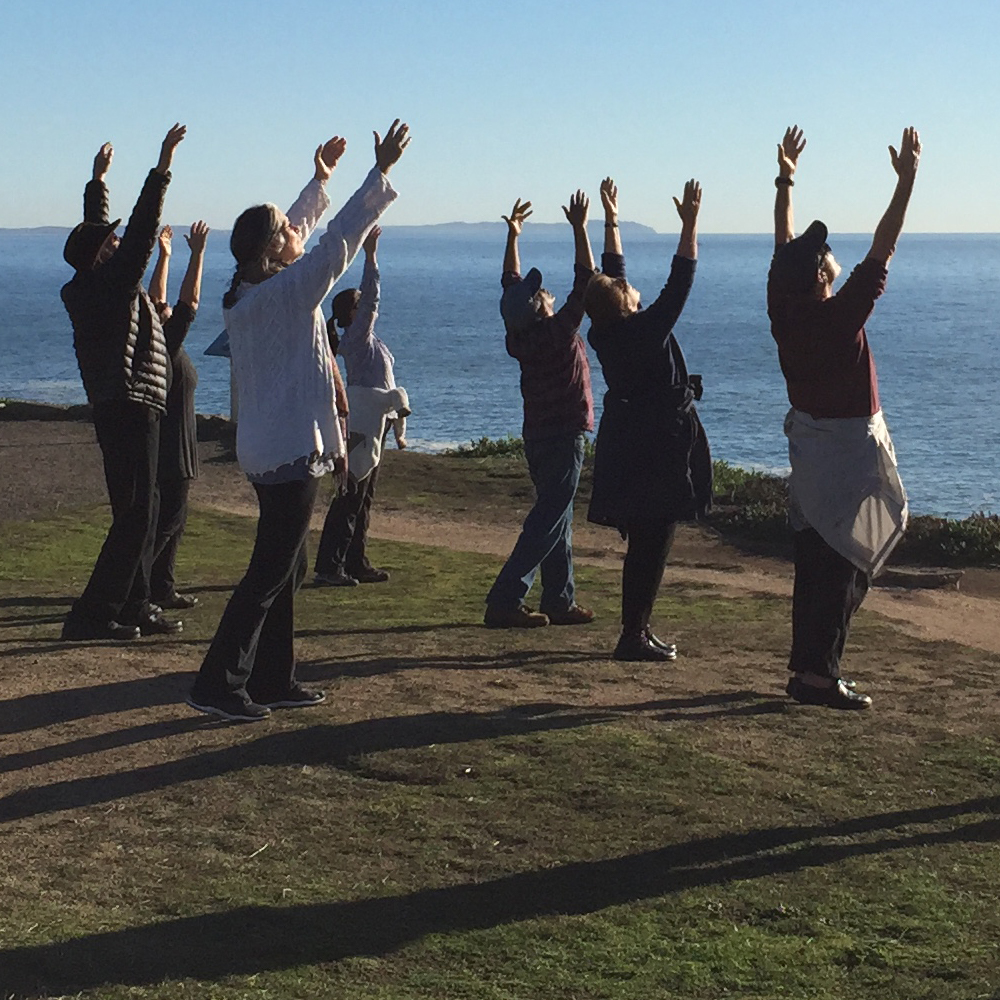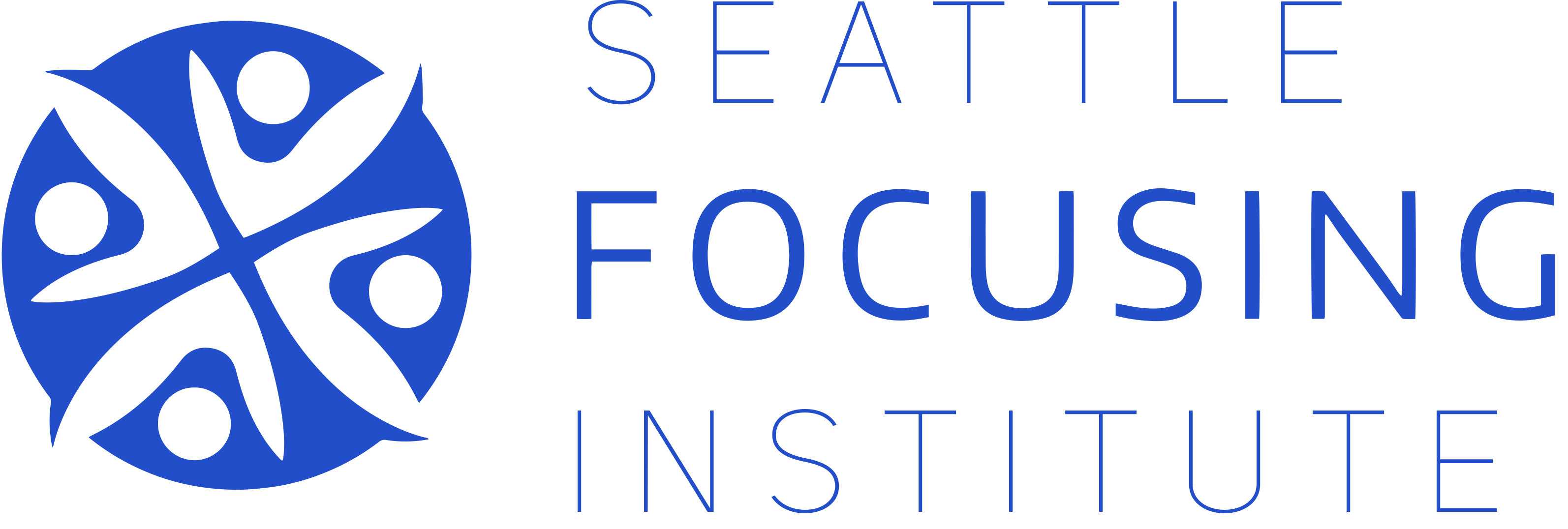
A Tool for Disentangling Clients from Intergenerational and Vicarious Trauma
We are now in the second month of a new decade! As we find ourselves solidifying goals and looking to the future, may we stay grounded in the knowledge that our forward growth is dependent upon unwinding past experiences in present moments. One of the great difficulties of personal change is learning to use present feelings, like the stuck sense of a situation (felt sense), and trace them back to their earlier roots. Accordingly, helping clients re-experience uncomfortable memory places safely is a key aspect of facilitating the change they so desire. As we take a look at such memory places, in ourselves and others, one thing we may find is that what we’re holding extends beyond the edges of our own autonomous experience.
I recently taught a unit on Intergenerational and Vicarious Trauma to my second-year Focusing students. It is both fascinating work and essential knowledge for anyone assisting another on a journey of transformation. Trauma often occurs in situations involving other human beings, and families are unfortunately a common venue. Children “pick-up” disowned aspects of parents’ depression, anxiety, anger, hopelessness and much more. As clinicians, we sometimes pick up our clients’ “stuff” as well. It is essential that we know how to both help our clients find, be-with and unwind their trauma, as well as identify and set down what we pick up during our time with them.
Let me share with you a clinical example and tool I use.
My client is frustrated with herself for having become so overwhelmed with the “simple” errands she had run the morning of our session. She says, “I went to yoga afterwords and felt so pulled in and tight.” We explore this clear body sensation and the intense emotion of, “It’s too much. I feel overwhelmed.” She describes the way she works with people and is successful, yet something in her still feels so compromised. She explores the part of her that pushes ahead by working hard and also the part that wants to be more present and calm. After spending some time allowing her to get a felt sense (body-mind awareness) of the whole situation, it becomes clear her feelings are out of proportion to the present events. The “too much” feeling carries a sense of something already there from a prior time, and it seems there are other people’s feelings held here. This is not all hers, it is vicarious.
I gently ask, “does this big feeling, the way this whole thing feels in your body, seem like it is just about this morning or is it perhaps an older feeling?” She says, “It is an old feeling…it has been around a long time.” She looks off to the side as if remembering something (re-experiencing one or many memories from her youth). I explain a little about how we take on others’ emotions and energy. This makes sense to her and she begins to tell me about being 7 or 8 years old.
Her adult self is present and she is not in a regressed state, so I know we can work here without much difficultly. Out pours anger and sadness, something of her father, mother, brother and a family friend. It is a lot, and understandably becomes too much. She feels overwhelmed. She has been holding in so many big feelings for so long. There is catharsis in what she shares but what is needed is more than that. Her mind and body need to experience their disowned trauma distinctly, with others’ experience separate from what is/was hers. She needs a way to set down the vicarious aspects of the trauma and release the overwhelming burden.
There is a rather simple exercise I use to accomplish setting down vicarious trauma. It does not take long, however complex trauma may require different rounds of setting down and differentiating between “mine” and “yours.” I ask her to get a blank piece of paper. The paper represents the whole thing, all the overwhelm, heavy body sensations, and “too much” feelings about when she was 7 or 8 years old. I ask her to sense inwardly and see if she can differentiate between what is hers and what is others’. Then I invite her to rip the paper, symbolically separating these aspects. She rips the paper easily into pieces that are mother’s, father’s, brother’s and hers. I ask her to check in with the little girl and sense how it is for her. A big smile comes to her face and she says, “She is so happy and free, she is skipping on the playground.” Clearly something big has already shifted, and still there are a couple more steps in the process.
The first, is to take some time to do something with the pieces of paper that represent what is not hers. Sometimes people like to find a place to put the actual paper or to place the energetic quality in a known or imagined place. Sometimes people like to burn the paper. Once a workshop participant placed her paper in my compost bin! My client had the feeling that some ritual was called for but was not yet ready to complete this step. Sometimes people need to simply pause here, do some writing, or get clearer on how to set things down.
The final step of the session was to take this new open, fresh, calm, joyful space into herself and return to the present. The past shows up to inform us and help us with the present as we move into the future. She could now see how her overwork followed by overwhelm was like driving a car by pressing the gas pedal down all the way and then slamming on the break. There was a “lightness and calm” that was deeply felt. She knows now that overwhelm is not a defect or shortcoming but rather an indication she needs to say hello to that little girl and support her letting go. Something essential about her did not get to function and be expressed as a young girl and was held frozen into adulthood. Now it is free to move forward into her life. Parts of her that have felt separate will more easily begin to integrate. She will more easily be her biggest, fully grown self.
Is our work done? It is my experience these things take time. What I hope to have highlighted here is that we could have gotten stuck on problem solving or coping with overwhelm but nothing really would have changed. I have enough experience, I am able to see how the current situation is an enactment or expression of past events and vicarious in nature, and help her find that element and let it go. That is a huge step forward and did occur in a single session.
Reading a client’s body and responding to them so they can enter uncomfortable somatic experience safely, and work with it, takes time to learn to do well. I offer a two-year training program in Focusing-Oriented Therapy and Complex Trauma for those who would like to learn. Please explore my training pages for dates and details!
